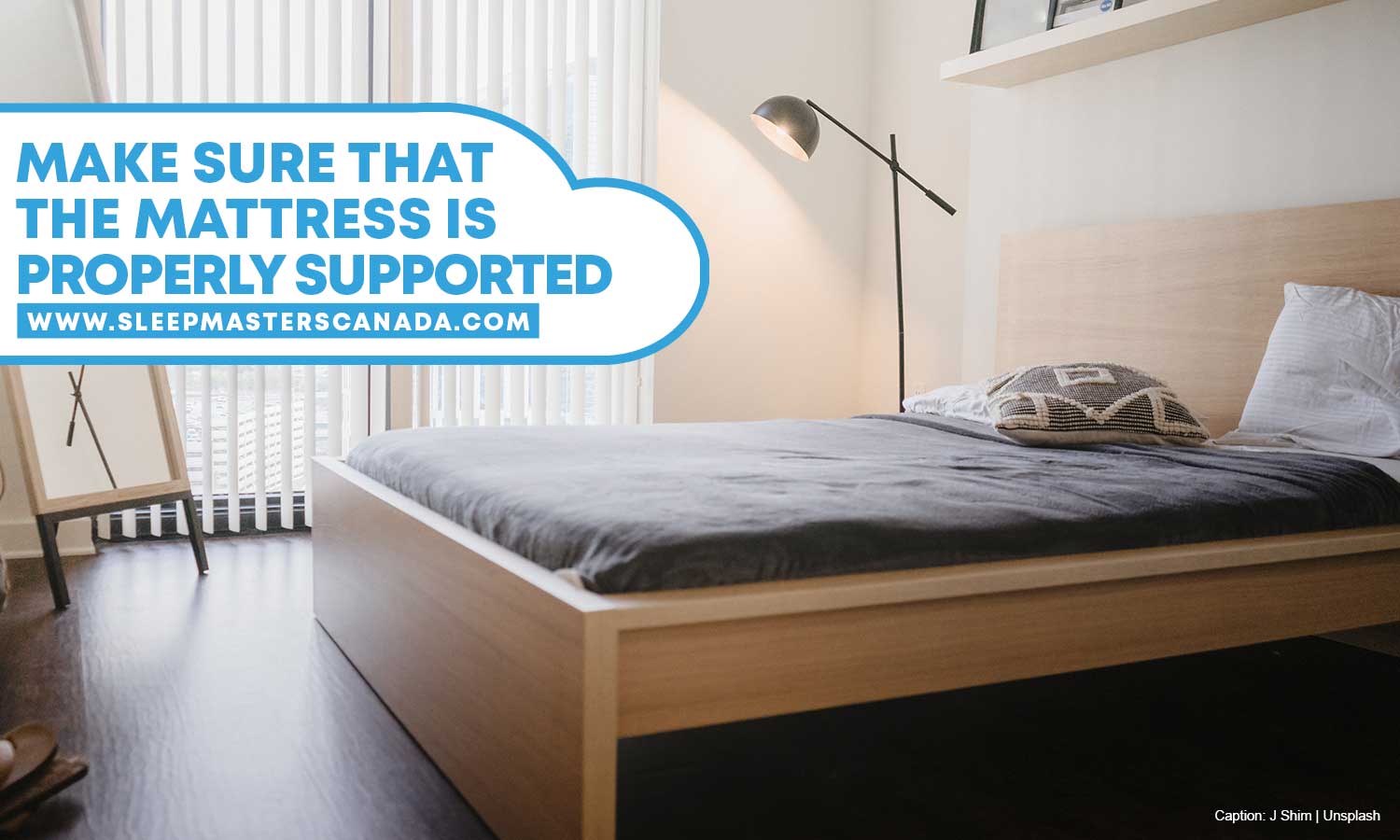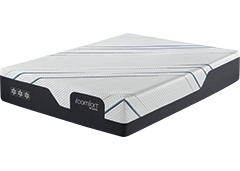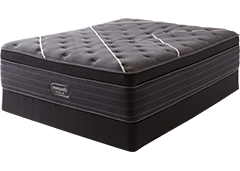
10 Ways to Make Your Mattresses Last Longer
Getting a good night’s sleep is essential, and given that you spend roughly a third of your life in bed, having a comfortable and durable mattress is crucial. The average lifespan of a mattress typically ranges from 5 to 10 years, but how well you care for it can significantly impact its longevity.
Proper maintenance not only extends the life of your mattress but also contributes to a healthier sleep environment. Adequate care promotes better air quality, reducing potential allergens and creating a more conducive atmosphere for restful sleep.
Investing time and effort into maintaining your mattress can also save you money in the long run. Mattresses can be a significant expense, and by adopting good care practices, you can delay the need for a new one, thus avoiding premature replacements.
-
Make Sure the Mattress Has the Right Kind of Support

When acquiring a new mattress, the necessity of purchasing a matching box spring or foundation varies, but providing the right kind of support is crucial for the mattress’s longevity. While it’s not mandatory to buy a set, ensuring proper support is essential to preserve the integrity of the mattress materials and prevent premature wear.
Refer to the manufacturer’s guidelines or warranty policy for specific recommendations tailored to your mattress type. Generally, innerspring mattresses often pair well with box springs, while memory foam and specialty mattresses require firm and solid support.
If opting for a non-traditional setup, such as placing the mattress directly on the floor, it’s important to consider its potential impact on both the mattress and your overall sleeping experience. A solid platform or foundation helps maintain the mattress’s structural integrity and contributes to a more comfortable and supportive sleep surface.
-
Use a Mattress Protector
Safeguarding the longevity of your mattress begins with a proactive approach, and one of the most effective strategies is using a mattress protector right from the start. Even with the best intentions to maintain a pristine sleep environment, unforeseen accidents can occur. A waterproof mattress protector acts as a reliable barrier, preventing spills or mishaps from penetrating the mattress and causing damage.
Beyond protecting against liquid incidents, a quality mattress protector serves as a shield against bodily oils, skin flakes, dust, and other debris that can accumulate over time. This not only keeps your mattress cleaner but also prevents the build-up of allergens that could impact your sleep quality.
There are two prevalent styles of mattress protectors to choose from:
- Fitted Protectors: These are akin to fitted sheets, making them easy to slip on and off. While affordable and convenient, they primarily protect the surface of the mattress.
- Encasement Protectors: True to their name, encasement protectors envelop the entire mattress, including the bottom. This comprehensive coverage not only guards against spills but also provides an effective barrier against allergens and helps deter bed bugs.
Investing in a mattress protector is a small yet impactful step towards ensuring your mattress stays in optimal condition, promoting a healthier sleep environment for years to come.
-
Wash Bed Linens Regularly

Achieving both sturdiness and comfort in a mattress requires more than just selecting the right materials—it demands a commitment to cleanliness. Unseen but inevitable, your body sheds sweat, oils, hair, and skin cells during sleep, creating an environment within your mattress that can harbor bacteria and dust mites. Adding to this, crumbs from late-night snacks or pet fur can further impact the mattress’s hygiene.
Regularly washing bed sheets and blankets is a fundamental step in maintaining a clean sleeping environment. Cleaning experts recommend washing these linens every week or two to effectively eliminate the accumulated residues. Even if you employ a mattress protector, it’s crucial to recognize that these protective layers don’t exempt your linens from regular cleaning. The mattress protector itself should also be washed periodically, following the manufacturer’s guidelines.
By adhering to a consistent cleaning routine, you not only enhance the longevity and performance of your mattress but also create a healthier sleep space. Clean sheets, along with a regularly washed mattress protector, contribute to a hygienic environment that promotes a restful and comfortable night’s sleep.
-
Rotate Mattress Regularly
Consistency in sleeping habits, particularly favoring one spot, can accelerate wear and tear in a specific section of your mattress, leading to premature deterioration. Regardless of the mattress type—whether it’s memory foam, latex, hybrid, or innerspring—regular flipping or rotation is a practice that can significantly extend its lifespan.
For memory foam, latex foam, hybrid, and innerspring mattresses, periodic rotation is a beneficial maintenance measure. Consider rotating the mattress 180 degrees every 2 to 6 months to ensure more even wear. While some newer mattress designs claim to eliminate the need for flipping, occasional rotation still proves advantageous in promoting uniform wear and reducing the likelihood of depressions and softening in specific areas.
This simple but effective practice helps distribute the impact of nightly use across different parts of the mattress, preventing concentrated wear in one spot. By incorporating rotation into your mattress care routine, you contribute to a more balanced wear and tear pattern, ultimately enhancing the longevity and comfort of your mattress.
-
No Jumping on the Bed

While it’s tempting, especially for the little ones, to engage in some bed jumping antics, it’s important to resist the temptation. Not only is jumping on the bed unsafe, posing a risk of injury, but it also takes a toll on the durability of your mattress. The rhythmic bouncing introduces unnecessary pressure, hastening wear and tear, and compromising the integrity of both the mattress and its support system.
The motion from jumping doesn’t just affect the mattress; it can also jeopardize the stability of the bed frame and support, which aren’t engineered to withstand the repetitive force of people bouncing on them. To ensure the longevity of your bed and maintain a safe sleep environment, it’s best to discourage any jumping activities.
Reserving the bed for its intended purpose—providing a comfortable and supportive space for rest—is the key to preserving its structural integrity. By avoiding unnecessary stress from jumping, you contribute to a longer-lasting and safer sleep haven for everyone.
-
Move the Mattress with Care
Ensuring the safe transportation of a mattress, especially during a move, requires thoughtful precautions to prevent damage and maintain its pristine condition. To shield your mattress from potential harm, wrapping it in plastic is a fundamental step. This protective layer serves as a barrier against dust, dirt, and unwanted intruders like bedbugs.
Additionally, consider placing the wrapped mattress inside sturdy boxes to provide an extra layer of defense. This not only helps prevent bending or folding but also guards against scuffs and scratches that can occur during transit.
When positioning the mattress for transportation, opt for an upright orientation on its side to minimize the risk of sagging. Avoid dragging the mattress across surfaces to prevent unnecessary wear on its cover, opting instead for careful lifting and placement.
-
Expose Mattress to Sun Occasionally

Harnessing the power of sunlight can be a game-changer for maintaining a fresh and hygienic mattress. On a sunny day, consider stripping your mattress and exposing it to sunlight for several hours. Research from Kingston University suggests that mites struggle to survive in warm and dry conditions. The simple act of bathing your mattress in sunlight not only helps eliminate moisture from both the sheets and mattress but also contributes to reducing the dust mite population.
Sunlight is a natural disinfectant, and this approach offers a chemical-free way to refresh your sleeping environment. Beyond its impact on dust mites, sunlight exposure can help dissipate odors, improve air circulation, and promote a healthier atmosphere in your bedroom.
-
Don’t Let Bedbugs In
The threat of bedbugs, those elusive and troublesome pests that can wreak havoc on mattresses, necessitates vigilant prevention measures. To safeguard your sleep haven from these unwanted hitchhikers, consider the following steps:
- Thorough Inspection: Before settling into any bed, whether at home or away, conduct a meticulous inspection for signs of bedbugs. Keep your luggage elevated and away from the floor, particularly when staying in unfamiliar places.
- Maintain Cleanliness: A clean and organized room is not only inviting but also discourages the presence of bedbugs. Regular cleaning routines, including vacuuming and decluttering, create an environment less conducive to infestations.
- Pet Boundaries: While we love our furry friends, keeping them out of your bed reduces the risk of introducing potential germs, bugs, and parasites. Providing separate beds for pets minimizes the likelihood of them inadvertently bringing unwanted guests into your sleeping space.
- Encasement Mattress Protector: Invest in an encasement mattress protector, creating an additional barrier against bedbugs. This protective layer not only shields your mattress from infestations but also facilitates easier cleaning.
- Exercise Caution with Second-Hand Furniture: When acquiring second-hand furniture, exercise caution and inspect it thoroughly before bringing it into your home. Bedbugs can hide in the seams and crevices of furniture, posing a risk of infestation.
-
Address Dirt and Stains Immediately

Maintaining the cleanliness of your mattress is not just about aesthetics—it’s a crucial aspect of ensuring a healthy sleep environment and preventing potential issues like pests and allergens. Here are some proactive steps to keep your mattress in top condition:
- Swift Stain Response: Promptly address any dirt or stains on your mattress to avoid creating a breeding ground for germs, pests, and parasites. Leaving stains unattended can lead to more significant problems down the line.
- Regular Vacuuming: Combat sweat, dust, and allergen buildup by incorporating regular vacuuming into your mattress care routine. Aim to vacuum your mattress at least twice a year to remove accumulated debris and maintain a cleaner sleeping surface.
- Immediate Stain Treatment: Act swiftly when dealing with stains—avoid letting them dry. For a natural stain removal solution, consider mixing lemon juice and salt. The bleaching properties of lemon, combined with the moisture-absorbing qualities of salt, create an effective stain-removing solution.
-
Follow Manufacturer Cleaning Directions
Maintaining the cleanliness of your mattress is essential for a healthy sleep environment and overall comfort. Each type and brand of mattress requires specific care and maintenance methods. Manufacturers typically provide instructions for general cleaning, including recommendations on suitable cleaning agents and those to avoid. This distinction is crucial as certain chemical cleaners may potentially break down the materials over time.
Here’s a refined approach to mattress care:
- Regular Cleaning: Regardless of the mattress type, establish a routine for regular cleaning to ensure a fresh and hygienic sleep surface.
- Follow Manufacturer’s Instructions: The manufacturer’s manual is a valuable resource for specific care guidelines. It provides insights into the best practices, recommended cleaning agents, and any precautions to be taken, tailored to your mattress type.
- Choose Appropriate Cleaning Agents: Be mindful of the cleaning agents you use. Opt for those recommended by the manufacturer to prevent any adverse effects on the mattress materials. Some chemicals may accelerate wear and compromise the mattress’s integrity.
The life span of mattresses depends on a variety of factors. Adhere to these 10 simple best practices and tips to ensure your mattresses last as long as possible.
Invest in lasting comfort and quality sleep with. If you have recently searched for ‘Mattress Store Near Me‘ and you live in the Greater Toronto Area, we would recommend visiting our location for expert help! Our collection features durable, high-quality mattresses designed to provide you with the utmost relaxation and support. Call us today at (416) 781-7441 to explore our range of products and find the perfect mattress that aligns with your sleep preferences. Elevate your sleep experience with Sleep Masters Canada—where lasting comfort meets exceptional quality.

 Serta
Serta Simmons BeautyRest®
Simmons BeautyRest® Pocket Coil
Pocket Coil Memory Foam
Memory Foam Pillow-Top
Pillow-Top Dreamstar Mattresses
Dreamstar Mattresses Mattresses under $500
Mattresses under $500